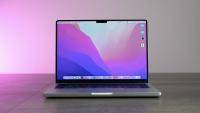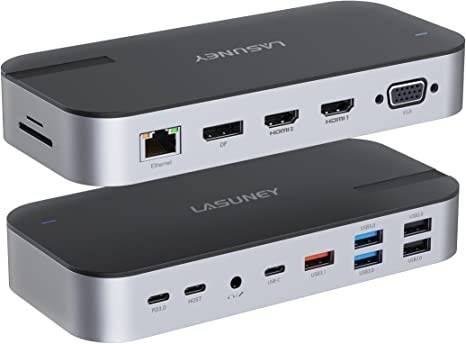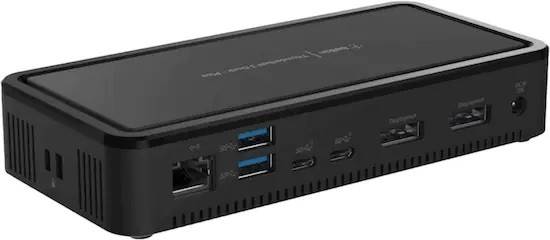
Apple M1 Macs have truly changed the game for laptops and desktops. The Apple Silicon-based devices from the Cupertino giant offer a lot of improvement in comparison to the Intel-based Macs. Most of the new M1 Mac owners are left impressed by the performance and efficiency their Mac can offer.
However, it appears that the M1-based Macs fall short in one key area. A new report from Howard Oakley from Eclectic Light claims that even though Apple says that the new Macs support Thunderbolt 4, they don't truly support USB 3.1 Gen 2. But, before we get into how Oakley reached the conclusion that M1 Macs don't truly support Thunderbolt 4, let's take a look at various USB-C generations and the difference in transfer speeds that they offer.
Various USB-C versions and their max transfer speeds
As we all know, USB-C is the new USB standard moving data and power to and from a wide variety of computing devices. One of the advantages of USB-C over the previous USB-A version, which made it popular, is that the USB-C ports feature a symmetrical design meaning the cables can be inserted in any orientation — up or down — thus eliminating frustrations of previous USB standards. But, this isn't the only factor why USB-C is popular.

In addition to offering a symmetrical design, USB-C also offers better transfer speeds than any other USB standard that has been created yet. With the latest USB-C 3.1 Gen2x2, you can even get up to 20Gbps data transfer speeds — something that was unimaginable a few years ago.
However, due to its naming scheme and terminology, many users don't actually know the data transfer speeds their USB-C port can offer. Let's take a look at the table of various USB-C standards and learn more about the max speed they offer. This will also help you understand why some M1 Mac users are complaining that their device isn't offering the speed that Apple claims.
| Orignal Name | New USB-C Standard | Max Speed | SuperSpeed Rating |
|---|---|---|---|
| USB 3.0 | USB 3.1 Gen 1 | 5 Gb/s | SuperSpeed USB |
| USB 3.1 | USB 3.1 Gen 2 | 10Gb/s | SuperSpeed+ |
| - | USB 3.2 Gen 1 | 5 Gb/s | SuperSpeed USB 5Gbps |
| - | USB 3.2 Gen 2 | 10 Gb/s | SuperSpeed USB 10Gbps |
Even though these standards claim to deliver speeds in Gpbs, practically this isn't possible "because of encoding and other overheads." Oakley says that USB standard claiming "5 Gb/s should yield around 500 MB/s, 10 Gb/s gives around 1200 MB/s, and 20 Gb/s about 2400 MB/s."
The problem with M1 Macs

Oakley carried out various tests to determine that M1 Macs actually don't fully support Thunderbolt 4. He conducted the experiment with three Mac models: one MacBook Pro with an M1 Pro chip, one Mac Studio with an M1 Max chip, and an Intel iMac Pro to compare the results. The app he used to test the speed of USB-C ports transferred 160 files ranging in size from 2 MB to 2 GB. He also ensured that all the external SSDs were Thunderbolt 4 compliant.
After a lot of thorough testing, Oakley concluded that "no Thunderbolt port in any M1 model appears to fully support 10 Gb/s SuperSpeed+ in USB 3.1 Gen 2." The Intel iMac Pro provided read and write speeds in the range of 470-480Mb/s whereas Mac with M1 chipsets could only provide throughput of 406 Mb/s. This is half of what the M1 Macs should theoretically provide. Since M1 Macs come with USB 3.1 Gen 2 ports, they should provide speeds of up to 10Gb/s or 1200Mb/s practically.
However, the maximum transfer speed an M1 Mac could provide was 406Mb/s when connected to a Thunderbolt port. The speeds got better when a USB 3.1 Gen 2 storage was used with the USB-C port and Thunderbolt ports of the Mac. However, the speeds dropped to 10-20Mb/s when a USB 3.1 Gen 2 storage was connected to a USB-C port.
All in all, the report suggests that the "shortcoming" has been present in all M1 Macs for nearly 18 months. He adds that if this was an error in the firmware of the Fabric core(s), it would have been fixed about a year ago but it seems that the M1 chip itself doesn't support fast USB-C speeds. He also adds that "Apple should have informed users and qualified its claim for the compatibility of these ports."
How to get better USB-C speeds on Apple M1 Mac
If you're worried about your Mac not delivering the speed it promised, worry not. It seems that there are a few ways you can get the actual USB 3.1 Gen 2 read and write speeds on your M1 Mac. One of the ways, that Oakley also points out, is by using the USB ports on the Studio Display.

Apple Studio Display comes with four USB-C ports on the back out of which three can deliver speeds up to 10Gb/s and the fourth one that supports Thunderbolt 3. Oakley suggests that using the Thunderbolt 3 port of the Display Studio should provide better read and write speeds. Another way to achieve fast USB-C port speeds on an M1 Mac is by using a Thunderbolt 3 Dock with your Mac. There are several Thunderbolt 3 Docks available online, some of which you can find down below.

Lasuney Thunderbolt 3 Dock

Lenovo USA ThinkPad Thunderbolt 3 Dock

FullProductNameTKTKTK
This is how to get better USB-C speeds on M1 Mac (all models) - Pocketnow
Read More

No comments:
Post a Comment